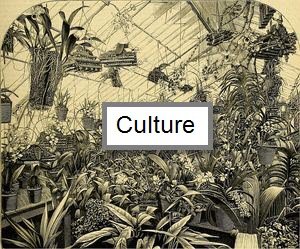Determining What your Orchids Need to do Their Best
WHEN YOU HAVE NURTURED FOR months an orchid plant that has previously bloomed, it is disappointing when a new growth fails to flower. The majority of orchids bloom annually at about the same time each year so if that time or season passes without flowers, it will probably be another year before a repeat opportunity will occur.
Nutrition is often the first concern of the novice when an orchid plant fails to flower. Every plant has minimum requirements for levels of essential and trace elements in forms that it can absorb for growth, development, flowering and seed production. And boosting the levels of certain elements in many cases will result in the production of flowers of larger size or greater number. Still, unless you never fertilize your plants, it is rather unlikely that a nutritional deficit is preventing flower production.
Examine your nonflowering plants for vigor. Each new growth or leaf should be as large or larger than the previous one. If they are not, better culture may be required.
First, take a look at the roots. Fortunately, orchid growers are among the few horticulturists who can often examine a good bit of their plants’ root systems without disturbing them too much. Unless they have just been repotted, most healthy epiphytic orchids have at least a few roots that ramble across and around, if not away, from the pot. These roots should be firm and healthy, and they usually are, since they are exposed to plenty of air as nature intended.
Do your best to determine the condition of roots in the growing medium as well. You can often see at least parts of roots that are burrowing into the medium. Sometimes gently poking away a few pieces of the growing medium will help to determine if the roots look as good within the medium as they do outside it. The roots in the growing medium should be firm and generally light colored. Typically, the healthy roots in established pots will eventually find their way through the drainage holes of the pot as well. Clear or transparent pots are favored by some orchid growers for certain types of orchids as these afford the opportunity to observe much of the plant’s root systems inside the pot without disturbing it.
Mushy dark roots are a bad sign. It is likely that the plant has been overwatered, or possibly the growing medium has broken down, leading to decay. If the plant has healthy roots above the medium or new roots forming, you may be able to save it with immediate repotting, being careful to remove all of the decayed roots.
Unfortunately, in most cases, plants with ruined root systems must be discarded. It is remarkable how long certain orchid plants can continue to exist with a poor or nonexistent root system. Yet bringing back such plants to good health is at best a long and tedious process.
If the nonflowering orchid’s root system passes muster, then you should expect its leaves, stems and pseudo-bulbs to look good. Any excessive shriveling or wrinkling of these parts ought to make you wonder if your assessment of the roots was accurate. If you do see wrinkling and are convinced that the root system is in good condition, you may be one of those rare individuals who do not water their orchids often enough. Also be sure to evaluate the color of the foliage, pseudobulbs and stems. The color of the foliage is one of the best ways to determine whether the plant is receiving adequate light. Most healthy orchid foliage is medium to light green in color. A bit of yellowish cast is not uncommon in the foliage of plants that are receiving very good light. Insufficient light is the most common reason that mature orchid plants fail to flower. Orchids grown in low light often have foliage that is dark green in color. The growing parts of such plants are often spindly and soft. Even if you think your plants are receiving enough light, it is a good practice to move any non-flowering orchid to a brighter location.
In addition to following these suggestions, investigate to discover any seasonal requirements that your orchid might have. Some orchids, such as certain dendrobiums, require a dry rest period before they will blossom. A number of orchids, such as the popular phalaenopsis, are encouraged to flower after exposure to cooler temperatures. Appreciate too that the orchids we typically cultivate are generally divided into types that thrive in cool, intermediate or warm temperature regimes. Cultivating a cool-growing type in warm conditions may not immediately kill the plant, but it will almost certainly prevent its flowering. There are also orchids, various cattlelya species among those, that initiate flowering in response to day length.
Orchids with sympodial growth, such as cattleyas, are said to produce a blind lead when a new growth fails to flower. While in rare cases these growths may bloom at a later date, in most situations it is not nutritional deficiencies, but rather cultural factors, that have produced them.
